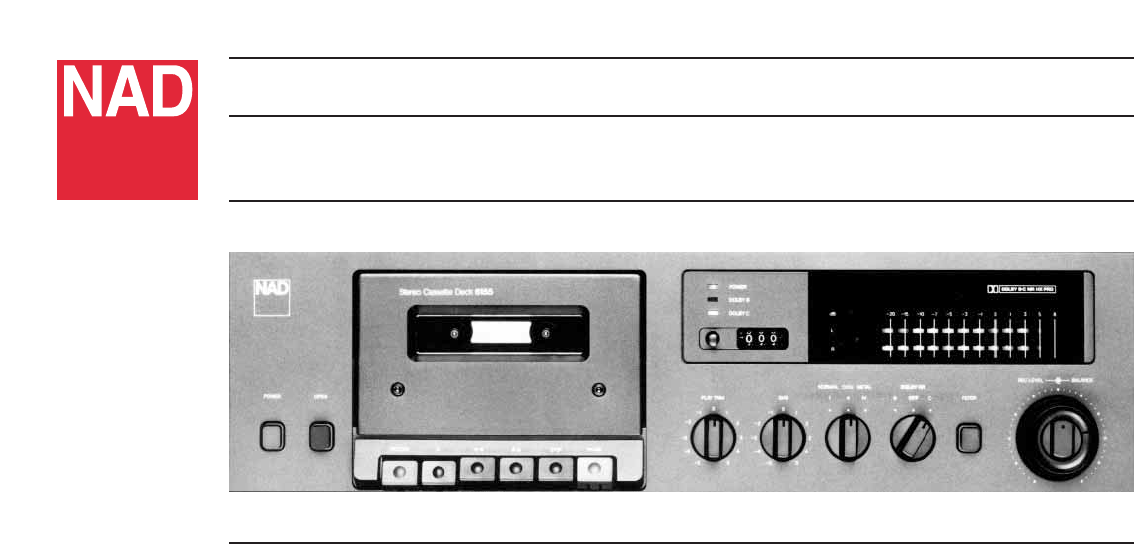
6155
Cassette Deck
Date of manufacture : Jan 85 - Jun 88
Please note that this document contains the text from the original product brochure, and some technical statements may now be out of date
THE FIRST SEMI-PROFESSIONAL CASSETTE DECK FROM NAD
The NAD 6155 is the finest cassette deck NAD has ever designed. Its outstanding performance, in both
recording and in playback, places it on a par with the best cassette decks on the market - machines
costing hundreds of dollars more than the 6155. How can such performance be achieved at the 6155’s
modest cost? NAD concentrates its engineering budget entirely on those aspects of design and
manufacturing that affect the audible performance of the recorder, while omitting cosmetic frills and
features that have little or nothing to do with how well the machine reproduces the true sound of
music. The NAD 6155’s superior performance is derived mainly from three design elements. One is an
NAD “first,” and the other two are found in only a few other cassette decks costing far more than the
6155.
A CLOSER LOOK:
Published specifications and test reports confirm that many cassette recorders can deliver accurate, wide-
range response under ideal laboratory-test conditions. But in everyday listening accurate tape playback is
elusive, for several reasons:
• Different brands of tape vary widely in high-frequency sensitivity, so even when a recorder’s tape
selector is set to the nominally correct position, different brands of tape may produce sound that is
brighter or duller than the original music.
• Because of the slow speed of cassette recording, tape saturation at high frequencies is a universal
problem.
• At the slow speed of cassette playback, high-frequency rolloffs will occur if there is even a very small
difference in head “azimuth” between the machine used to record the tape and the deck used for
playback. (“Azimuth” refers to the orientation of the head gap, which must be exactly at right angles
to the direction of the tape motion.)
• Treble losses may occur if a tape is accidentally exposed to the magnetic field of a loudspeaker, an
amplifier’s power transformer, or a magnetised tape head.
• Despite the standardisation of 120 and 70 microsecond playback equalisation for cassette decks,
there are significant brand-to-brand differences among recorders, so that tapes recorded on one
machine may not reproduce accurately on another deck.
THREE STATE-OF-THE-ART FEATURES:
1. PLAY TRIM - A FIRST FROM NAD
The NAD 6155 is the first cassette deck to feature the new Play Trim circuit, an innovation that corrects
the high-frequency aberrations which, for many years, have limited the fidelity of cassette recordings.
NAD developed the Play Trim circuit in collaboration with Dolby Laboratories, to deal with the variations
in high-frequency response that often occur in cassette recordings - especially in tapes that were
recorded on one machine and are being played on another.





